View
- All posts
- 100% solar powered
- a2 cow ghee
- a2 cultured ghee
- a2 ghee
- a2 gir cow ghee
- aaji bread
- affects on health
- Ajinkya Hange
- aliv ladoo
- aliv seeds
- all flour roti
- Almond benefits
- almond butter
- Almond butter benefits
- Almond butter spread
- amla
- amla loaded of nutrients
- amla pickle
- amlaprash
- amlaprash for winter
- ancient grain
- ancient grains
- ancient medicine
- ancient method
- Ancient rituals
- Ancient traditional methods
- Ancient wisdom
- anti inflammatory
- anti parasitic
- antioxidant
- arjun
- arjun ghee
- arjun ghrita
- arjun ghruta
- Ashwagandha
- Atmanirbhar Bharat
- atta
- authentic bread
- Authentic Foods
- authentic rice
- aviyal
- ayurveda
- AYurveda healing foods
- ayurvedic
- ayurvedic health
- ayurvedic herbs
- ayurvedic immune
- ayurvedic immunity booster
- ayurvedic medicine
- ayurvedic treatment
- bacopa brahmi
- Bacopa Monneiri
- bajra bhakhri
- Bajra filled with protein
- bajra flour
- banryard millet
- Barnyard millet
- be aware of your food
- Be Vocal For Local
- bee
- benefits of a2 ghee
- benefits of desi ghee
- benefits of eating banana
- benefits of ghee
- Benefits of Jaggry
- benefits of khapli wheat
- benefits of millets
- benefits of moringa
- benefits of moringa powder
- benefits of organic farming
- benefits of ragi
- benefits of rice
- benefits of sattu
- Benefits of Sesame
- Benefits of sugarcane jaggery
- besan
- best bhakhri
- best ghee for children
- best ghee in india
- best soup
- best soup for winter
- best with every meal
- bhagar
- bhagar barnyard millet rice
- bhagar fast food
- bhagar for fasting
- bhagar rice
- Bhakhri with desi ghee and jaggery
- Bhodani
- bilona ghee
- bilona method
- Bimbli
- boiled rice
- Bombay Canteen
- boost immunity
- Bovine Colostrum
- Brahmi
- brahmi benefits
- brahmi herb
- Brahmi plant
- brahmi powder
- brain booster
- brain ghee
- brain power
- brain sharpner
- brands to support
- breakfast idea
- breath freshener
- bring back immunity
- brinjal recipe
- brown banana bread
- brown liquid
- brown liquid syrup
- brown sugar
- build strong immunity
- buttermilk recipe
- Buy Local and be Vocal about it
- buy moringa powder online
- Cake for gluten intolerant
- capitalist
- carbohydrate
- Carbon positive
- carbon positive business
- carbs and millets
- cashew
- cashew fruit
- cashew nut
- cashew nut price
- celiac disease
- cerry tomatoes
- Chakkara
- Chakli
- chana
- Chana Dal
- chana dal in telugu
- chane ki dal in english
- Chef Interviews
- Chef Thomas Zachharias
- Chef TZac
- Chefs of India
- Chemical free
- choco nibs
- Chocolate cake
- choose health
- chywanprash
- clean air
- clean practice
- climate positive business
- coconut leaves
- coconut nutrition
- coconut oil
- coconut oil recipe
- coconut oil wood pressed
- Cold Pressed oil
- Colostrum
- Colostrum powder
- comfort foods
- commercial agriculture
- cookies
- cooking
- Cooking with local seasonal produce
- covid recovery
- cow dung benefits
- Cows in our villages
- crops
- culinary uses
- cultured ghee
- cultured ghee benefits
- curcuma longa
- curcumin
- Curry Leaves
- Date by Jaggery by farmers
- Date Palm Jaggery
- Date Palms
- delicious flavours chutney
- delicious pure
- Desi Chana Dal
- Desi Cow Colostrum
- desi cow ghee
- Desi Ghee
- desi ghee benefits
- desi ghee for child
- desi gir cow ghee
- Desi Indian Foods
- deterioration
- dhaagewali mishri
- dhagewali sugar
- diabetes control
- Diabetes Cure
- diabetes prevention
- diabetic diet
- diwali recipes
- Diwali Special
- Diwali sweets
- drumstick leaves
- drumstick plants
- earthworms
- easy bread
- easy for digestion
- easy to make sweet recipes
- Eat healthy.
- eat well
- eco friendly business
- educate farmer society
- einkorn wheat
- emmer long wheat
- emmer wheat
- emmer wheat bread
- energy power bank
- enhance your hunger
- ethnic millets
- farm liquid
- farm ti families
- Farm to homes
- farmer group
- farmer owned brand
- farmer owned bsuiness
- farmers
- farmers food
- farmers grow so we live
- Farmers of India
- farming
- farming community
- farming is live
- farming the soil
- Fat to Fit
- fertility
- fertilizers
- finger millet
- Fit India Conclave 2020
- Fit India Movement
- Fitness influencers
- Fitness Journey
- five millets
- flour
- folate
- food for diabetics
- food good for heart
- food to increase immunity
- foods for health
- Foods for healthy lifestyle
- Foods for immunity
- foods of India
- foods that boost immunity
- foods to improve immunity
- foxtail millet
- fresh soft bread
- Full Moon Ghee
- Full Moon Ghee from India;
- full of microrganisms
- fungus
- future of health living
- garden cress
- garden cress seeds
- Genetically modified seeds
- Gentic modification
- Ghee
- ghee benefits
- ghee bhat recipe
- Ghee by farmers
- Ghee by farmers Full Moon
- ghee for child
- ghee for children
- ghee for toddlers
- Ghee from India
- Ghee is cultural food
- Ghee made during the waxing phase of the moon
- ghee made for children
- ghee panjiri
- ghee roasted panjiri
- Ghee sweet
- ghol sharbat
- giloy
- Gir Cow Desi Ghee
- Gir Cow Ghee
- gluten allergy
- Gluten bad for us
- Gluten Free
- gluten free millets
- GM foods
- golden spice
- Golu
- gond moringa
- good foods for diabetic
- good health
- good oil
- grain
- grains
- grandmother's bread
- grated coconut
- green pulao recipe
- green space
- green work
- groundnut oil
- group farming
- Growing up with ghee
- Guizotia abyssinica
- gulkand
- gut friendly rice
- hair growth hack
- hair loss
- hair loss remedies
- halim seeds
- hand pounded peanut chutney
- hand roasted
- handmade chocolate
- Handmade Desi Ghee
- handmade organic food
- Handmade unrefined sweet
- harbara
- harbara da
- Harbhara Dal
- haryali recipe
- health benefits
- health benefits of amla pickle
- health benefits of jaggery
- health benefits of millets
- health benefits of moringa powder
- health benefits of soup
- health benefits of soya bean
- health n\benefits
- healthhy making
- healthy almond
- Healthy alternative
- healthy bread
- healthy chocolate
- healthy cooking
- healthy drink
- healthy eating
- healthy food
- healthy foods
- healthy ghee
- healthy jaggery liquid
- healthy lifestyle is a choice
- healthy oil
- healthy pickle
- Healthy recipe
- Healthy Recipes
- healthy rice
- healthy soup
- healthy sweetner
- hearty meal
- heirloom recipes
- Heirloom seeds
- herbal ghee
- herbal ghee benefits
- herbal rice
- herbal treatment
- high in fibre
- holi
- holi colours
- holi festival
- holi special
- holi wishes
- holi2023
- home made bread
- home made cake
- Home made masal roti
- home made pickle
- home made soup
- home remedies
- home remedies for diabetes
- homemade buttermilk
- homemade mithai
- homemade pickles
- homemade sweets
- honey
- hot chocolate cake
- How jaggery is made
- how to lose weight
- how to use amla
- how to use moringa powder
- idli podi
- illipai tree
- iluppai
- iluppai tree
- immune system
- immunity booster
- Immunity Boosting Powder
- Immunity system
- immunity system booster
- indian bread
- indian cashew
- indian cold drinks
- Indian cuisine
- indian gooseberry
- indian herbs
- indian red rice
- indian seeds
- indian spice
- Interview
- is wheat bad for us?
- jadi booti
- Jaggery
- jaggery bread
- jaggery for diabetes
- Jaggery vs Sugar
- jhangora
- jhangora rice
- jowar atta
- jowar flour
- kaakvi
- kaakvi sugarcane
- Kaddu
- kaju
- kaju 1kg price
- kaju badam
- kaju fruit
- Kala Chana
- Kalkandu
- kand
- kanji
- Karupatti
- kau price
- kerela oil
- Khand
- khapli atta
- khapli bread
- Khapli cake
- khapli flour bread
- khapli gehu
- khapli panjiri
- khapli wheat
- kharvas
- khurashni
- Kids and moringa powder
- king of virata
- kitchen is where it begins
- kodo millet
- Laddoo Recipe
- lakadong
- Lal Math
- Legumes
- Lentils
- Lifestyle and Exercise for fitness
- limited batch Ghee
- Liquid Date Palm Jaggery
- Liquid Jaggery
- liquid jaggery syrup
- living breathing earth
- local farming
- local food
- local produce
- local sugar
- locally grown ingredients
- long term health
- love for cake
- love for ghee
- low calories
- low calories '
- low calories sugar liquid
- Luke Coutinho
- Made by farmers
- Made in India
- made in india brands
- madhuca
- mahua
- mahua flower
- mahua gach
- mahua ka tree
- mahua seed cake
- mahua seed oil
- mahua seed oil pice
- mahua tree
- mahula flower
- mahuwa
- making of desi ghee
- Making of Jaggery
- makkhan bread
- manna millets
- manure
- marketing perspective
- medicated ghee
- medicinal herb
- medicinal herbs in india
- medicinal properties
- medicinal rice
- medicinal sugar
- meghalaya
- methods of preparing ghee
- michri cookies
- millet bhakri
- millet cereals
- millet cookies
- millet day
- millet dishes
- millet flour
- millet grain
- millet in hindi
- millet rice
- millet year
- Millets
- millets during pregnancy
- minerals
- mishri products
- mittle millet
- Modak Recipe
- Modern day wheat
- monofloral honey
- moringa
- moringa chutney
- moringa capsule
- Moringa idli podi
- moringa in hindi
- moringa inn telugu
- moringa leaf powder
- Moringa Leaves
- moringa oleifera
- Moringa parathas
- moringa plant
- Moringa powder
- moringa powder benefits
- moringa tree
- mouth freshener
- mukhwas
- mulch
- mulching
- mulching traditional
- multi grain roti
- Mumbai local food
- Mustard Seeds
- mysore pak
- mysore pak with Jaggery
- nachani ambil
- nachani atta
- nachani bhakri
- nachani laddoo
- nachani papad
- nachani pith
- nachani recipes
- nachani roti
- nachani slice
- Nachni satva
- namkeen recipe sattu
- Narendra Modi's moringa paranthas
- Native foods for Fitness
- Native superfood
- native trees
- natural breath freshener
- natural buttermilk
- natural cold drink
- natural edible oils
- natural farming
- natural food
- natural hair remedies
- natural immunity
- natural immunity booster
- natural jaggery bread
- natural mouth freshener
- natural oil
- natural plant growth promoter
- navara rice
- navaratri
- navaratri recipes
- navaratri speicial
- Navratri
- new mothers
- niger oil
- niger seed
- niger seeds
- no chemical sugar
- No preservative
- Nolen Gur
- Nolen Gurer
- nomadic beekeeping
- non chemical sugar
- Non-GMO seeds
- Non-GMO soya bean
- nutrition
- nutritious
- nuts panjiri
- nyjer seed
- oil of coconut
- onam sadya
- oodalu in english
- OOO farms
- Organic
- organic agriculture
- Organic almond
- Organic and Handmade
- organic chocolate
- organic edible oils
- organic farmers
- Organic farming
- Organic Farming benefits
- organic farming in India
- Organic food
- Organic foods
- Organic Foods COst
- organic honey
- Organic Jaggery
- Organic jaggery cake
- organic kaju
- organic moringa powder
- Organic Peanut Butter
- organic peanuts
- organic produce
- organic rice
- organic sattu
- organic sattu flour
- organic soil
- organic sugarcane jaggery
- pallantla cashew
- Palm family of trees
- panchagavya
- panjeeri
- panjeri
- panjiri
- panjiri mix
- pathogens
- paul and mike
- pcod remedies
- Peanut Butter
- peanut chutney
- peanut oil
- Phodshi
- pickel recipe
- pickle
- pickled tomato es
- plant sweetner
- plants
- pomato
- pomato tomato
- postpartum depression
- Prasadam
- pregnancy
- preserving the environment
- Prime Minister Narendra Modi
- protect your health
- puberty
- pure desi ghee
- pure ghee mysoree pak
- pure honey
- ragi
- ragi diet
- ragi flour
- ragi malt
- ragi porridge
- Rai Ki Chutney
- ram til
- raw cashew
- raw eating
- Raw honey
- real pure ghee
- recipe for multigrain flour
- recipe for multigrain roti
- recipe from moringa powder
- recipes
- recipies
- recovery rice
- recycle
- recycle wastte
- red pasta
- red rice
- reduce
- reduce waste and save resources
- refreshing drink
- renewable energy
- renewable tbof plant
- replace refined foods in the kithcen
- replenish groundwater
- reuse
- reverse ageing
- reverse diabetes
- rice benefits
- rich coconut flavour
- roasted cashew
- roasted kaju
- Roasted peanuts
- rock candy
- rural farmers of india
- rutuja diwekar
- ruwangan hachi chaman
- sahjan
- sahjan tree
- saliya
- sand roasted sattu
- sangam literature
- Sarkarai
- sattu
- sattu atta
- sattu benefits
- sattu blog
- sattu drink
- sattu flour
- sattu good for health
- Sattu good for weight gain
- Sattu good for weight loss
- sattu ka atta
- sattu ka sharbat
- sattu laddoo
- sattu maavu
- sattu porridge
- sattu powder
- sattu sharbat
- Satyajit Hange
- seasonal foods;
- seasonal vegetable soup
- Sesame
- Shatavari
- Shevla
- Shop Local
- single origin kaju
- Snack
- socialist
- soft bread
- soil health
- soil is life
- solar farming
- solar now
- solar powered pllant
- solar tbof plant
- sorghum atta
- Soup
- soup before meal
- Soup recipe
- sour flavour
- south dish
- south india breakfast
- south india dinner
- south india lunch
- south indian dish
- Soya bean for fodder
- soya bean for protein
- Soya bean rich in protein and vitamins
- spice cultivation
- Spices
- sponge cake
- sprouted ragi malt
- stomach friendly rice
- stonegorund flour
- stoneground sattu
- stories about food
- sugar alternative
- sugarcane jaggery
- Sugarcane Jaggery Sap
- summer drink
- summer superfood
- Sundal
- sundried
- Super food
- superfood
- superfruit
- Support made in India
- support small business
- sustainable agriculture
- sustainable lifestyle
- sustainable living
- sustainable packaging
- tamil nadu recipe
- Tandoori Veg Platter
- tapenade
- tasty chutney
- TBOF
- tea sweetner
- thaenpagu
- thatte idli
- the honey
- Til Gur
- Til Gur Laddoo
- tomato
- tomato chips
- tomato farming
- tomato puree
- tomato sauce
- tomato seeds
- tomato soup
- tomatoe plants
- tomatoe tapenade
- traditional farming
- traditional farming practice
- traditional food
- traditional Indian Foods
- traditional ingredients
- traditional practices
- traditional sattu
- traditional soup
- traditional spices
- tribal
- tribal food
- tribal wisdom
- true farmers
- turmeric
- turmeric powder
- Two Brothers Organic Farms
- types of millet
- udalu
- udalu millet
- unpasterurised honey
- unrefined edible oils
- unrefined salt
- unrefined sugar
- varai millet
- varau bhagar
- vari miilet
- vippa flower
- Vitamins and antioxidants.
- vitamins inside of moringa powder
- Vocal for Local
- warm bowls
- Waxing moon Ghee
- wellness ghee
- Wheat
- Why are organic foods so expensive
- Why I love Ghee
- why jaggery is better than sugar
- why organic farming
- wild food festival
- winter foods
- winter is here
- Winter pickle recipe
- winter soup
- winter vegetables and fruits
- winter wellness
- wood pressed oil
- wood pressed oils
- zantyes
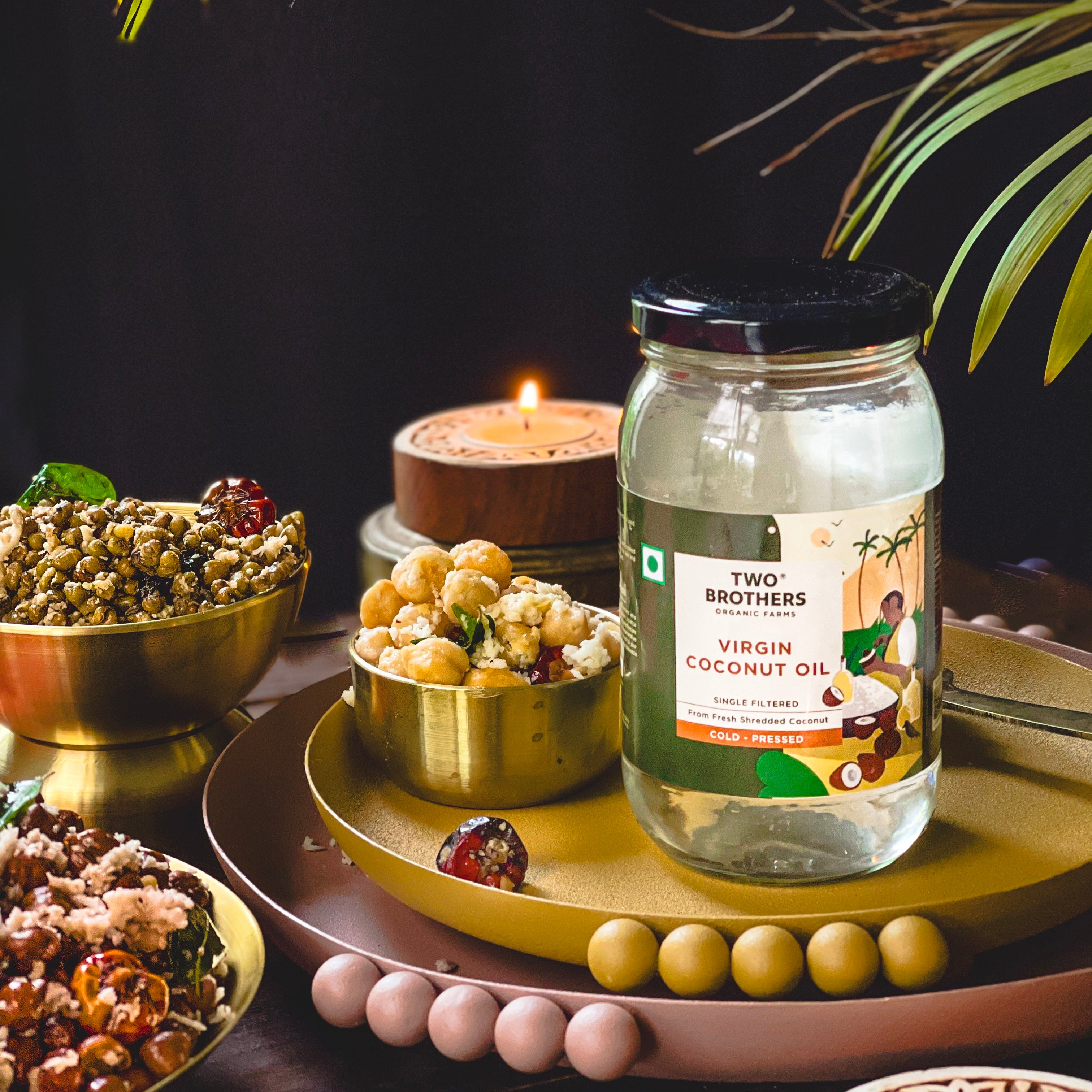
coconut oil
Navratri Special Recipe - South Indian Chana Sundal
The latter part of the year is a time for strengthening family bonds, repeating yearly ...
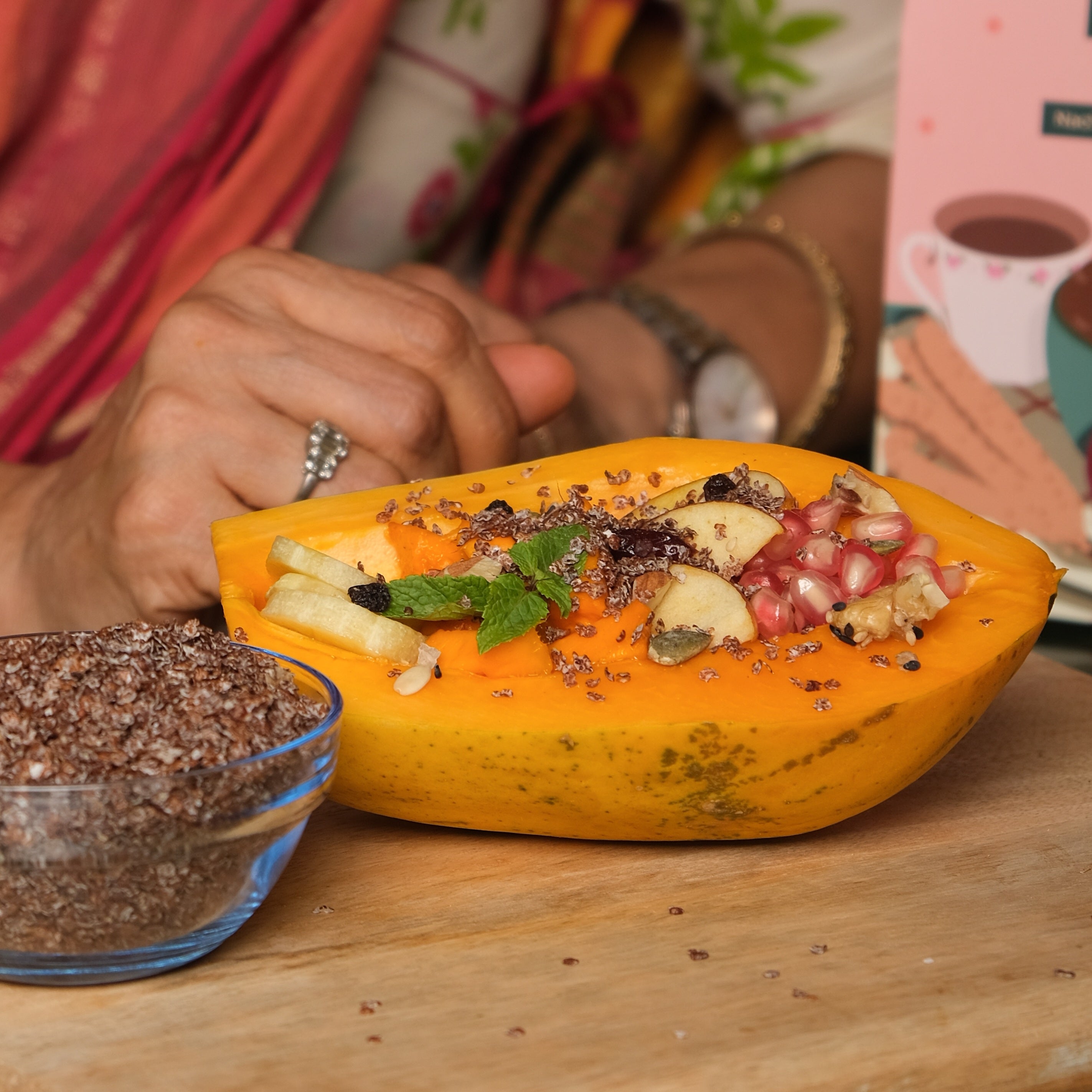
benefits of millets
Millet Poha - A Nutritious and Delightful Breakfast Option
In our fast-paced lives, finding a balance between taste and nutrition is essential. Wh...
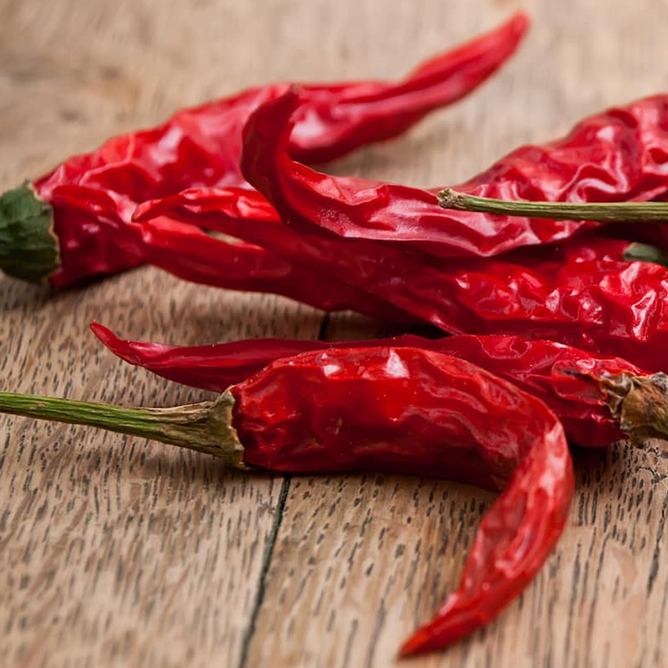
GI Tagged Single Origin Byadgi Chillies from Byadgi, Karnataka
Modern home cooks enjoy making various international cuisines, such as Thai red curry p...
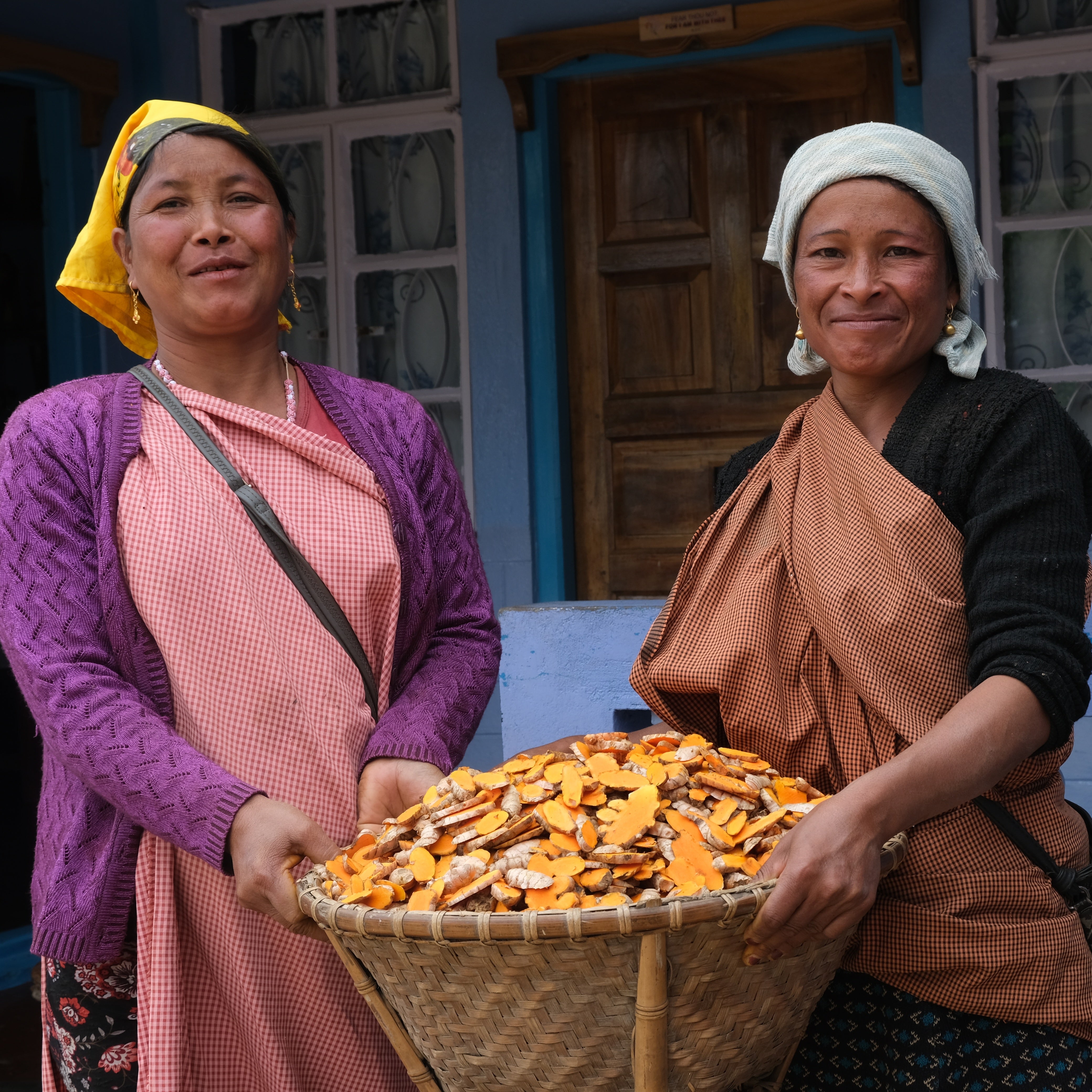
anti inflammatory
Women Farmers & Lakadong Turmeric: Journey of Strength & Success
The West Jaintia hills of Meghalaya, adorned with lush green landscapes and abundant ra...
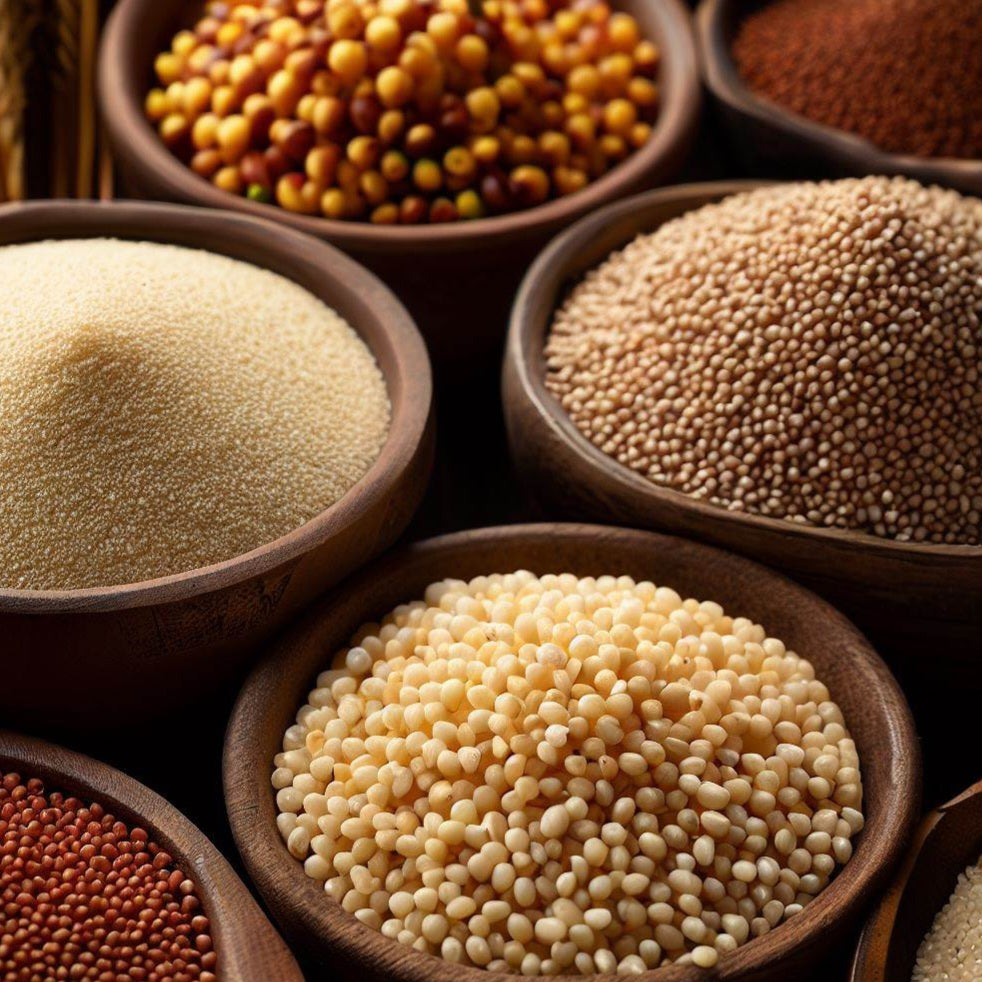
Why Should Millets Be A Part Of Our Daily Diet?
In the vast world of cereals, there exists a group of grains that often go unnoticed, o...
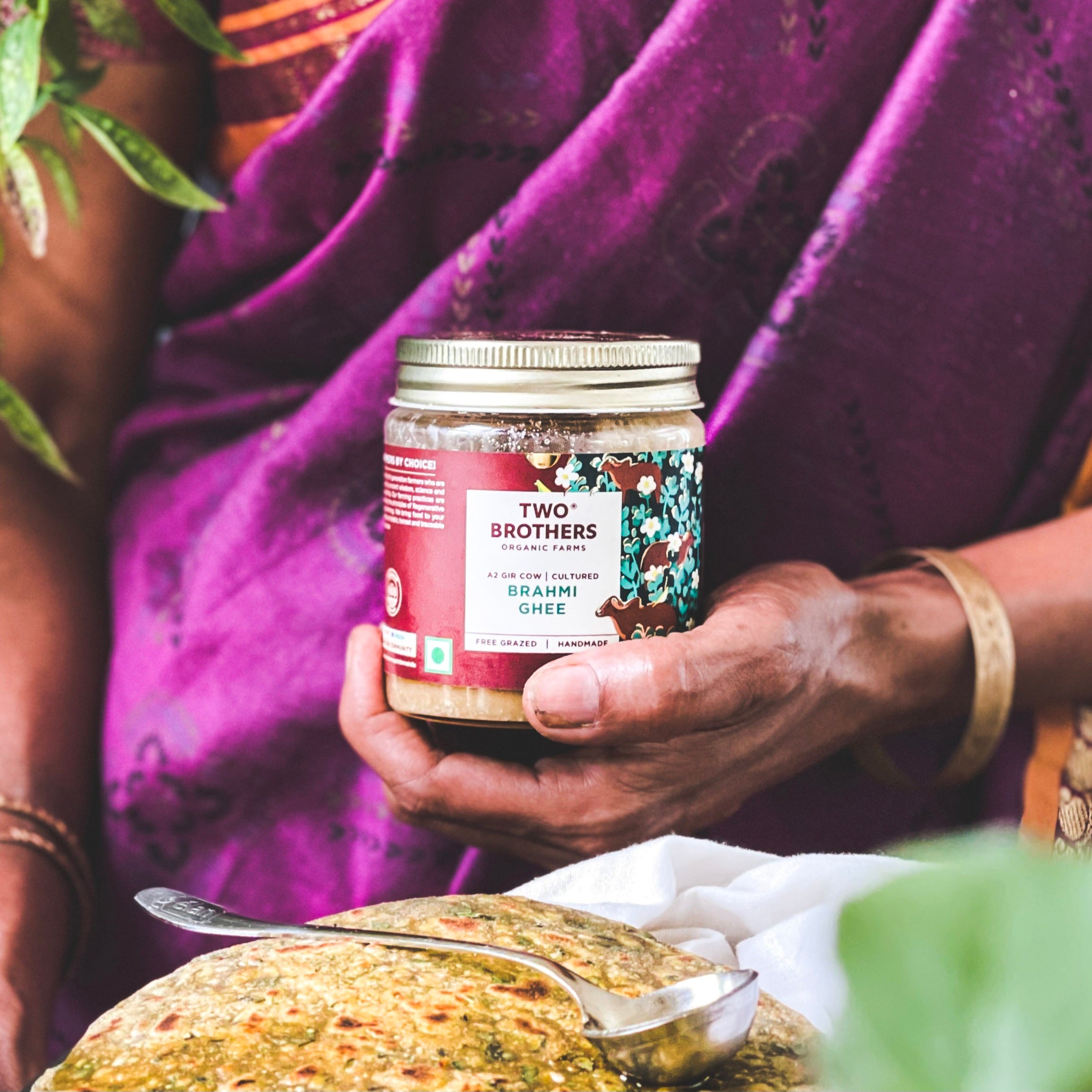
Recipe - Green Leafy Khapli Roti with Brahmi Ghee
In addition to the cultivated greens , our country is home to a wide variety of wild gr...
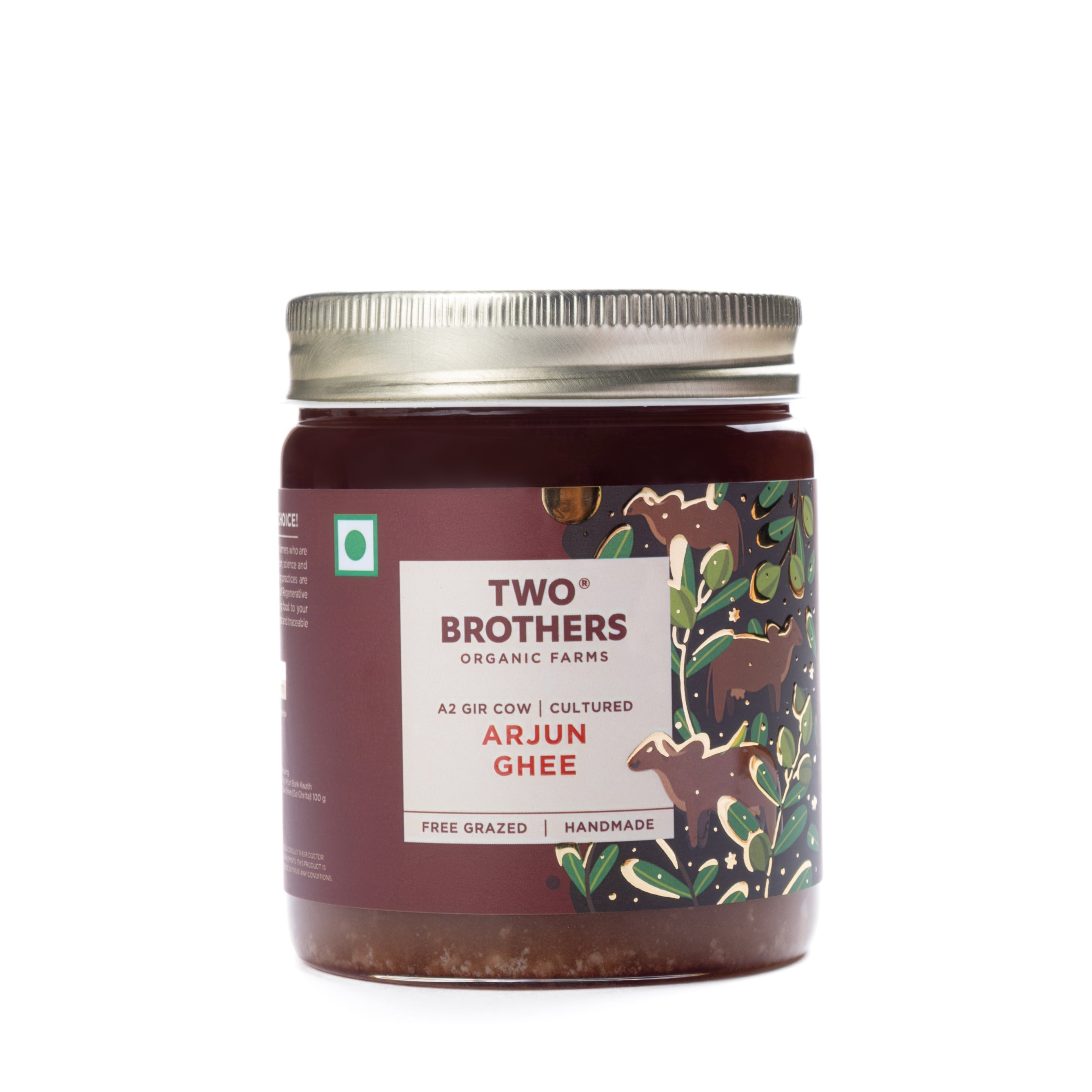
a2 ghee
Arjun Ghee for Heart, Cardiovascular Health
This Arjuna Tree is currently being “evaluated” for its claim (by ancient indian medici...
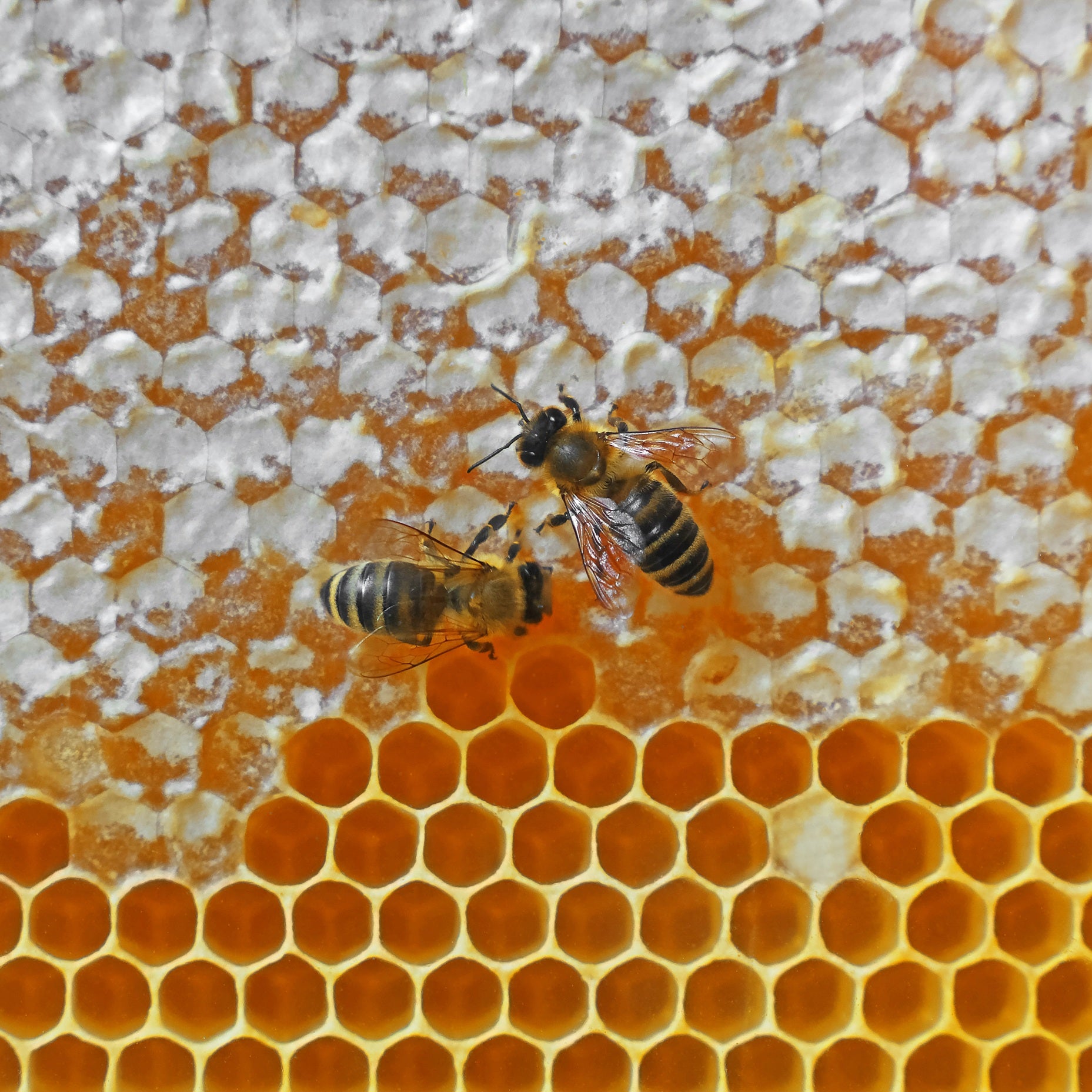
honey
Health Benefits of Raw Unpasteurised Honey
Consciously procured and bottled raw honey on the other hand is an unbeatable medicinal...
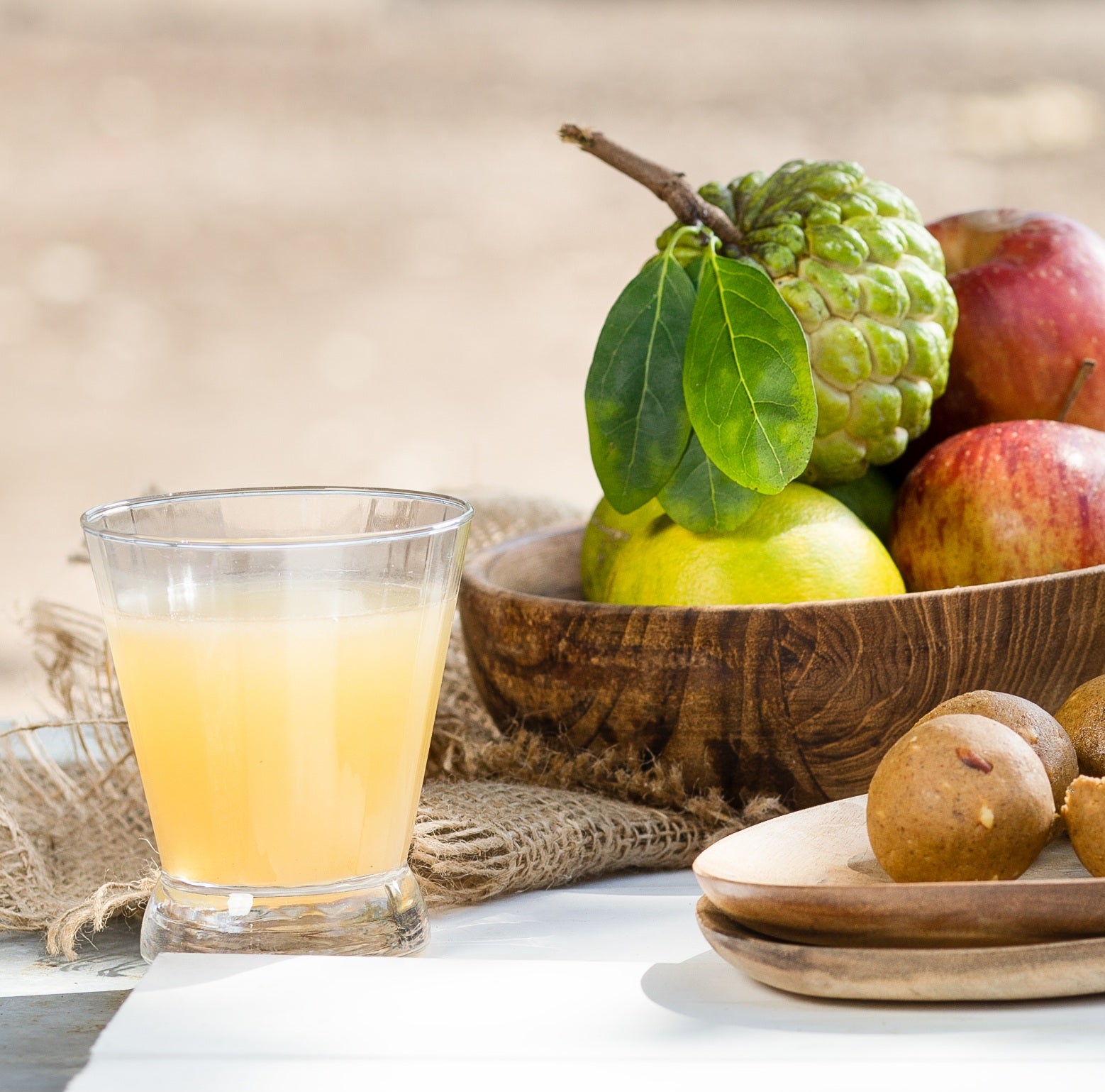
benefits of sattu
5 reasons to have Sattu this summer
In the midst of all that is exotic, uber cool and oh so instagrammable, a very special ...







